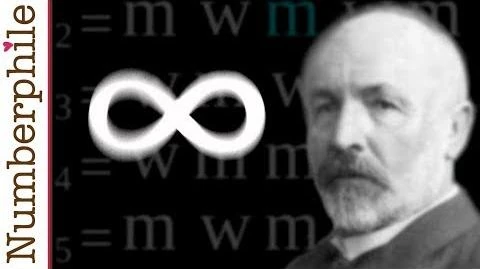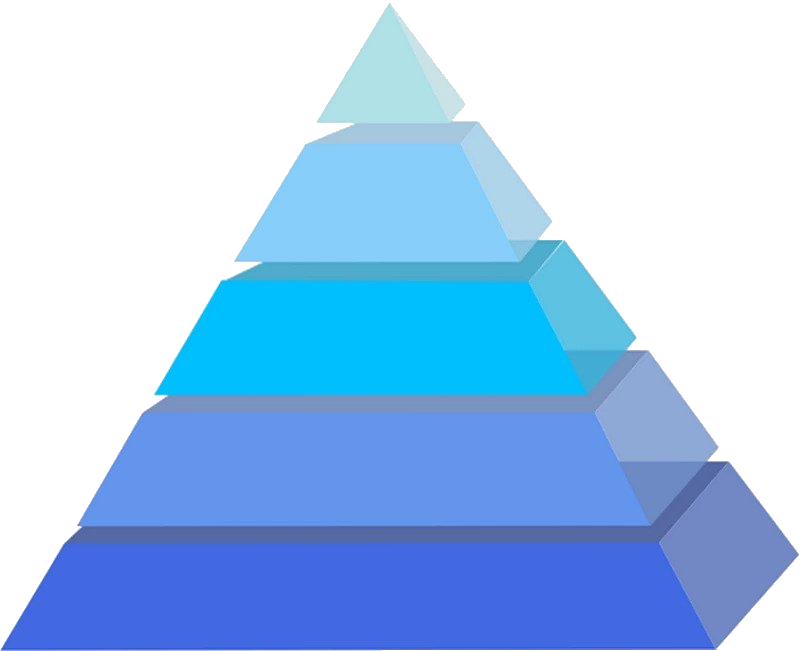- 11,800
- 7,361
So I'll preface this by saying, I didn't follow the tiering revisions, I don't do high tier, I am just not clued in, in the slightest, in this regard, let's say. I believe that makes me advantaged in realizing what is sufficient information needed to help an outsider from this circle even understand what are they talking about.
Anywho the reason why I make this thread in fact, is that our wiki does an extremely poor job in explaining its highest tiers, Low 1-A to 0, and sufficient edits need to be made to make them even coherent. Beginning with...

 vsbattles.fandom.com
vsbattles.fandom.com
This page REQUIRES you to have very precisely read the Tiering System page, and even then you'd have to contextualize information given in your own head, for you see, this page does not tell what transcendence gives you what tier.
The page's function ONLY tells you what infinity stacking is, it doesn't tell you about
This is not even mentioning the tiering system page is atrocious as well. Speaking of...

 vsbattles.fandom.com
vsbattles.fandom.com
This page is so bad in its explanation, that despite not knowing about what the new revisions did, I genuinely went " wait what that can't be right " and had to discuss with Ultima in regards to it, and I was correct.
Now the tiering explanation is serviceable up till 1-A, and because I want to illustrate the issues with the descriptions given, I'll state you my (incorrect) interpretation of it, High 1-B to Tier 0. I am trying my damndest here, as well.
So High 1-B is easily understood, it's just a being able to affect an infinite number of dimensions or an infinite dimensional being, which are analoguous to the core "infinite layers of existence"
Also keep in mind you can transcend High 1-B to be Low 1-A, this'll be very important in abit
The paragraph above explains in essence, that the character needs to be above an uncountable infinity by a physical level besides dimensions (used in our tiering system) but the terms are nightmarish
Also "simply stacking" means nothing, HOW is that different from bypassing? Word it.
Even ignoring that, these pages are chocked to the brim with irrelevance and buzzwords with no real meanings, and honestly need to be worked on HEAVILY, to even be comprehensible properly.
Anywho the reason why I make this thread in fact, is that our wiki does an extremely poor job in explaining its highest tiers, Low 1-A to 0, and sufficient edits need to be made to make them even coherent. Beginning with...
Tiering System Explanation Page

Tiering System Explanation Page
The following is an explanation of the upper bounds of this wiki's Tiering System, namely the parts encompassed by Low 1-A and above, although the concepts presented here do have great influence on the functionings of much lower tiers. For information on the primary measuring stick used to...
This page REQUIRES you to have very precisely read the Tiering System page, and even then you'd have to contextualize information given in your own head, for you see, this page does not tell what transcendence gives you what tier.
The page's function ONLY tells you what infinity stacking is, it doesn't tell you about
- Where this infinity stacking is applied on the Tiering System exact, (Only "it's Low 1-A")
- That supposedly the type of infinities we stack in the Tiering System changes
- Which types of infinities stacked lead to what tier
- What the absolute hell does this have to do with tiers
This is not even mentioning the tiering system page is atrocious as well. Speaking of...
Tiering System Page

Tiering System
The following is a comprehensive overview of the hierarchical system which this wiki utilizes in order to properly categorize and index fictional characters, entities, and objects based on the scale of their feats, and the varying scopes which they can affect or create/destroy. However, it...
This page is so bad in its explanation, that despite not knowing about what the new revisions did, I genuinely went " wait what that can't be right " and had to discuss with Ultima in regards to it, and I was correct.
Now the tiering explanation is serviceable up till 1-A, and because I want to illustrate the issues with the descriptions given, I'll state you my (incorrect) interpretation of it, High 1-B to Tier 0. I am trying my damndest here, as well.
High 1-B | High Hyperverse level: Characters who can universally affect, create and/or destroy structures whose size is equivalent to a countably infinite number of qualitative sizes above a universal model, usually represented in fiction by endless hierarchies of layers of existence, each succeeding one completely trivializing the previous into insignificance, or more generally a space with countably infinite dimensions.
So High 1-B is easily understood, it's just a being able to affect an infinite number of dimensions or an infinite dimensional being, which are analoguous to the core "infinite layers of existence"
Low 1-A is where things start to get complex, it describes an "uncountably infinite number of planes affected", if the Tiering Explanation Page was linked here however (it isn't), but **** it, I saw the Vsauce video, sure, Low 1-A is equal to ℵ1, I'll buy it.Low 1-A | Low Outerverse level: Characters who can universally affect, create and/or destroy structures and expanses of uncountably infinite dimensions, or which have a size roughly analogous to them, such as uncountably infinite sets of hierarchical layers or planes of existence, most specifically ones whose amount of layers is comparable to the set of all real numbers, and are thus equated to the first uncountably infinite cardinal, ℵ1, for simplicity's sake.
Alternatively, this tier can also be assigned to characters who transcend High 1-B structures when no further context regarding the nature of such transcendence is given.
Also keep in mind you can transcend High 1-B to be Low 1-A, this'll be very important in abit
So now we get to good ol' 1-A, and this is where the web of contradicting and imprecise terms begin to happen.1-A | Outerverse level: Characters who can significantly affect, create and/or destroy realms or states that fully transcend infinitely-layered hierarchies and/or dimensional levels on a conceptual or existential level, normally being portrayed as entirely external abstractions that lie outside of the applications of spatiotemporal dimensionality as a constant defined by physics on any level, even compared to infinite or uncountably infinite dimensions,
The paragraph above explains in essence, that the character needs to be above an uncountable infinity by a physical level besides dimensions (used in our tiering system) but the terms are nightmarish
- "Infinite" in this entire description, that aren't a part of "Uncountably Infinite" should be completely removed altogether from this, because we're done with countable infinite, we've been done with it since Low 1-A.
- Note the wording ESPECIALLY, on "compared to infinite or uncountably infinite dimensions", every human being in existence would register this as "compared to countably infinite or uncountably infinite dimensions", implying you can get 1-A by transcending High 1-B, except no, WE OURSELVES STATE, that's Low 1-A
- For the ever-lovin' God's sake, don't give us what characters "normally get it from", this implies they can also get it from transcendences aside from being "entirely external abstractions that lie outside of the applications of spatiotemporal dimensionality as a constant defined by physics on any level, even compared to infinite or uncountably infinite dimensions"
- And if there are, SPECIFY THEM, you can "fully transcend" something "on a conceptual and existential level" by just being a higher dimension, conflating with the Low 1-A definition, since "conceptual" and "existential" alone are VERY VAGUE terms
I'll straight up say it, this point is actually dogshit presumption, FAR LOWER BEINGS have claimed this, and FAR HIGHER BEINGS have rejected this. I know it's a vs. debating tradition, but our own wiki standards have move far away from this notion, even dismissing it across multiple pages as a notably relevant factor to tiering. Should not even be mention.usually by perceiving them as akin to fiction or something similarly insignificant.
What the absolute hell does "very obviously" mean? Give an example.However, do note that a character can qualify for this rating even if their verse does not have an infinitely-layered or equivalent cosmology, as long as it is either stated, shown or left very obvious that the character in question already bypasses the very nature of such structures altogether, in a way that simply "stacking" more of them logically would not allow one to reach their level of power / size.[3]
Also "simply stacking" means nothing, HOW is that different from bypassing? Word it.
This is the only paragraph that ends up meaning anything, because it's reliant on someone else explaining the tier for the page, it's ℵ2 and onwards, fine. Moving on.Mathematically, 1-A has its size represented by further uncountably infinite cardinals beyond useful applications of certain measures (ℵ2 and onwards, most specifically) and can be extended unto greater levels of infinity, representing different complexities or qualitative "steps" on an Outerversal scale, in the same way 1-B and 1-C are divided. Characters who stand an infinite number of steps above "Baseline" Outerversal realms and structures are to have a + modifier in their Attack Potency section (Outerverse level+)
This is also just completely contradicting text.High 1-A | High Outerverse level: Characters who can affect and create/destroy states or realms which are completely transcendent over infinitely-layered Outerversal hierarchies and any extensions thereof, as well as the framework in which such entities are defined in the first place. Note that simply adding more "layers" to an already infinite 1-A hierarchy (or some structure of equivalent size) is not enough to reach this tier, and one must be completely external and unreachable by it in any form.
- At this point we have been made aware of Uncountable Infinities, so natural assumption is, this implies that if I just do ω+1 Outerversal Hierarchies, this is enough for it to be High 1-A, since "COMPLETELY TRANSCENDED" means jack if you don't give a SINGLE CRITERIA for said completion.
- But this gets contradicted because "simply adding more layers isn't enough", except, this implies you can never HAVE anything above 1-A since the vague transcendence will also be adding a """"" layer""""" in the very layman's terms you've used.
- "and one must be completely external and unreachable by it in any form." means absolutely nothing if you don't explain it. By most purposes a lower """"""""""" layer"""""""""""" can't reach you.
So it's ω+2 and up. Got it. Thanks!0 | Boundless: Characters who demonstrate an equivalence to, or can create/destroy/affect, transcendental abstract levels of existence which conceptually stand superior to even High 1-A levels. Being “omnipotent” or any similar reasoning[4] is not nearly enough to reach this tier; characters at this level must transcend High 1-A characters as High 1-A characters would transcend 1-A ones. This tier has no true endpoint, and can be extended unto any higher level, spiraling infinitely upwards.
Conclusion
I just want people who wrote these descriptions to realize not everyone was in their thread, not everyone knows their shorthands or "you get what I'm saying" s, and they can't understand shit you listed on these pages if you forget to elaborate on them.Even ignoring that, these pages are chocked to the brim with irrelevance and buzzwords with no real meanings, and honestly need to be worked on HEAVILY, to even be comprehensible properly.
Last edited: